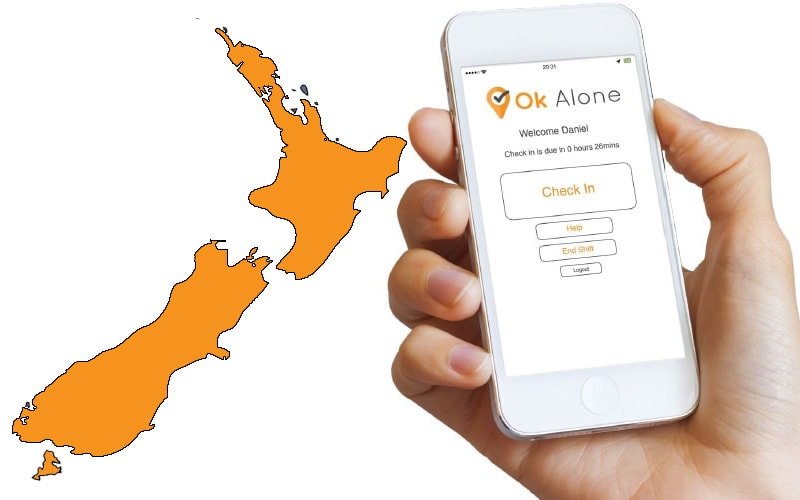Here are the lone working and work alone acts and regulations found in the New Zealand. We cover all the lone worker policy and legislation we have found for New Zealand, including the Health and Safety at Work Act 2015.
Employment New Zealand defines working alone as:
‘Working alone is when work is done in a location where the employee can’t physically see or talk to other staff.’
They advise that there are a number of things to consider when an employee is working alone:
- security – working alone may put an employee at increased risk from other people that they interact with (eg customers) or strangers (eg risk of violent attack)
- social isolation – employees working alone are at risk of social isolation, managers should make sure that there are regular opportunities to keep in touch and to bring the person together with the rest of the team (even if this is by email, telephone conferences, video conferences etc)
- organisation isolation- employees working alone must receive the same information, training and development opportunities, and consultation as other employees. Managers should invite these employees to attend when there are events, both social and work related
- technological isolation – employees working alone should have access to the same or more advanced technology as other employees (depending on the job requirements)
- safety – the employee’s physical safety related to their job tasks, for example, an arborist working alone, will have different risks to an administrator working alone, but both have risks. Working alone means if something goes wrong or there is an accident etc, there may be no one else there to help the person.
The Health and Safety at Work Act 2015, requires employers to maintain regular contact with employees working alone or in isolation, if this is not possible, they should check in with a designated person at regular intervals. The employer must also provide an effective means of getting help quickly in an emergency.
Part 2 of the Health and Safety at Work (General Risk and Workplace Management) Regulations 2016
21- Managing risks associated with remote or isolated work
“(1) A PCBU* must manage, in accordance with regulations 5 to 8, risks to the health and safety of a worker who performs remote or isolated work.
(2) To minimise risks to the health and safety of a worker associated with remote or isolated work, a PCBU must provide a system of work that includes effective communication with the worker.
(3) A PCBU who contravenes this regulation commits an offence and is liable of conviction –
(a) for an individual, to a fine not exceeding $10,000:
(b) for any other person, to a fine not exceeding $50,000.
*a person/entity conducting a business or undertaking

As an expert in lone worker content management, I possess an extensive knowledge base and experience in the area of lone working and safety monitoring. My expertise in this field encompasses a wide range of areas, including risk assessment, training, communication, and technology. I have a deep understanding of the unique risks associated with lone workers and have researched and written many projects and articles to educate people in how to mitigate these risks.
Throughout my time with Ok Alone, I have kept up to date with technological developments, legislative changes and regulations that have been introduced to help organizations ensure the safety of their lone workers.

